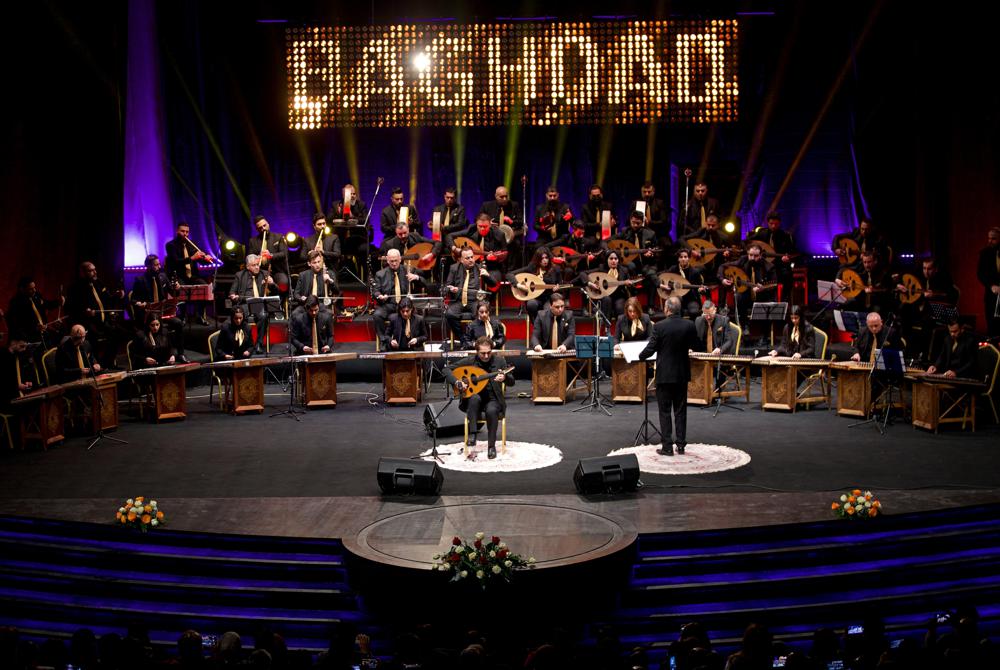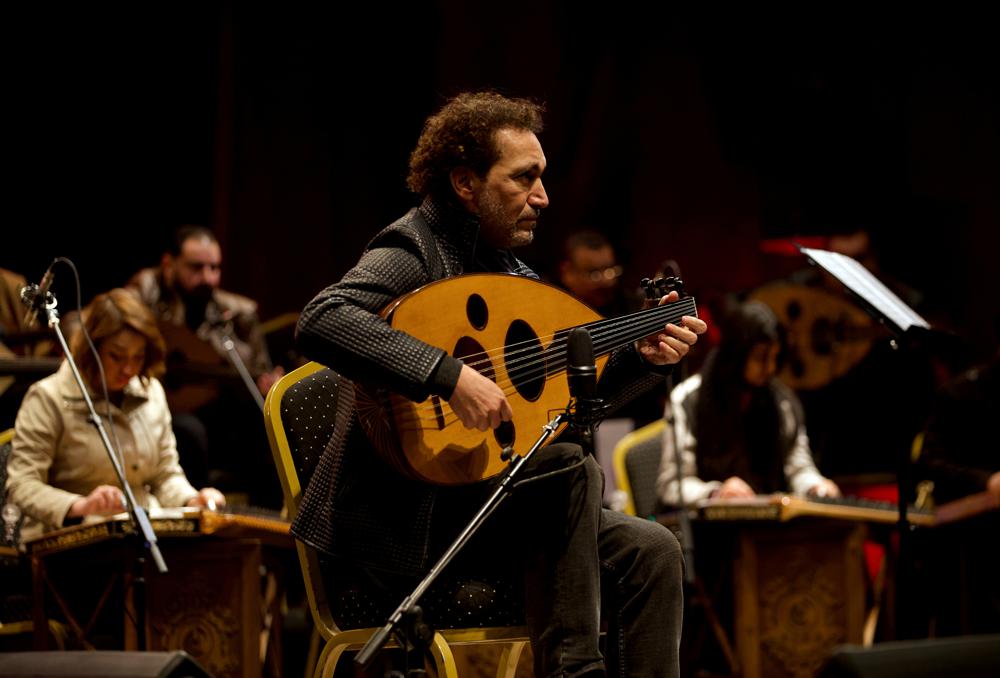
For decades, Naseer Shamma, an iconic virtuoso oud player, was separated from his beloved nation due to war. Now, he plans to use a series of concerts and other projects to support culture and education in the conflict-torn Iraq.
As Shamma performed a night of songs from the Iraqi songbook and modern compositions, the crowd at the Iraqi National Theater was on their feet, overtaken with emotion.
“We’ll work on lighting the stage so that we can go out of the darkness and into the light,” he informed the audience before launching into “Sabah El Kheir Ya Baghdad,” or “Good Morning Baghdad.” Traditional instruments were played by an orchestra behind him, which included young female musicians.

Shamma, who is 59 years old, is regarded as a contemporary master of the oud, a pear-shaped stringed instrument resembling a lute with deep tones and fast-changing chords that are important to Arabic music.
He had his first oud instruction class at the age of 11 and later graduated from the Baghdad Academy of Music in 1987. He was born in the southern city of Kut and was raised in a conservative home.
During Saddam Hussein’s tyranny, he fled Iraq in 1993 and rose to international stardom, performing all over the world and winning dozens of accolades. He established the House of the Oud in Cairo, a school committed to passing on the instrument to future generations.
Shamma, who now resides in Berlin, came to Iraq for the first time after 1993, to sing at an Arab League event in 2012 . After the US-led invasion that deposed Saddam Hussein, he said that he was astonished and saddened to witness what had become of his nation, which had devolved into never-ending cycles of violence and sectarian bloodletting.
“I found concrete T-walls surrounding Baghdad, and it felt like I was walking inside a container, not a city,” Shamma said in an interview with The Associated Press, referring to the blast walls that line many Baghdad streets.
He returned multiple times since then, most notably in 2017, when Iraq was ripped apart by terrorists from the Islamic State group, who had taken control of much of the country.
This was Shamma’s trip back to Iraq which was reasonably calm despite the country’s economic woes. He observed that the atmosphere had changed, that the city had become more calm, and that the audience had become more responsive.
“The creative tastes of the public had altered as a result of wars, but yesterday night they were identical to those of the 1980s.” Shamma said after the first of four concerts he will give in Baghdad this month, “I felt like I was in an international event like one in Berlin.”
The concert series, dubbed “Education First,” intends to draw attention to Iraq’s deteriorating educational system, which has been ravaged by years of conflict, government neglect, and corruption. Iraq’s education levels, once among the highest in the area, are now among the lowest in the Middle East and North Africa, according to the World Bank. The proceeds from ticket sales will be used to renovate Baghdad’s Music and Ballet School.
“In Iraq, there are still mud schools with no desks, and pupils sit on the floor,” Shamma remarked. “Education is the answer and the remedy for Iraq’s future.”
Shamma is well-known for leveraging his celebrity status to help humanitarian organisations, Iraqi children, and artistic endeavours. He launched a project a few years ago to rebuild the infrastructure of Baghdad’s 21 main squares, which had been demolished. He is also a United Nations Educational, Scientific, and Cultural Organization (UNESCO) peace ambassador.
Shamma expressed hope that he will be able to return to Iraq permanently in the near future and listed a number of initiatives that he has in mind to help with reconstruction.
He condemned religious parties that strive to muzzle critics of art and politics, and commended that Iraqi youth had paid a heavy price for protesting against corruption.

Post Your Comments